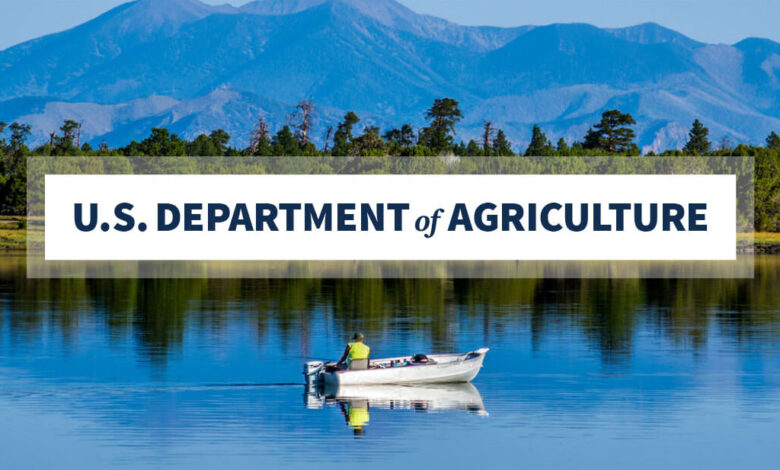USDA partners with states to conserve private forestlands as part of Investing in America agenda

$265 million from the Inflation Reduction Act will conserve 335,000 acres of private forests
WASHINGTON, Oct. 29, 2024 — Today, the U.S. Department of Agriculture’s (USDA) Forest Service announced an investment of more than $265 million to conserve nearly 335,000 acres of ecologically and economically significant forestlands across the nation, in partnership with states across the country, thanks to funding from President Biden’s Inflation Reduction Act.
The Forest Service will fund 21 projects in 17 states to conserve working forests that support rural economies. In 2024 alone, the Forest Service has invested nearly $420 million to conserve more than 500,000 acres through the Forest Legacy Program and since 2021, has invested more than $758 million in 123 projects.
“Local communities, and our country as a whole, depend on private forests to provide clean water, habitat, recreation, and jobs,” said Agriculture Secretary Tom Vilsack. “Landowners face many pressures to convert forests to other uses and this investment is key to keeping the economic, social, and ecological benefits that these forests provide.”
“Forests provide innumerable benefits to people and communities, and for nearly 35 years the Forest Legacy Program has allowed us to support States and landowners in their efforts to conserve important forestlands,” said Forest Service Chief Randy Moore. “Thanks to the Inflation Reduction Act, we are protecting parcels we never thought we’d have the resources to secure and even more acres of vital forestlands so that future generations of Americans will be able to enjoy all the irreplaceable benefits they provide.”
Through the Forest Legacy Program, states work with Tribes, local communities, and landowners to identify important private forestlands and develop proposals to conserve these lands as forests. The Forest Service selects the top proposals for funding through a competitive, entirely voluntary process and provides grant funding to participating states so they may implement the work. Some of this land will stay in private ownership and will be permanently protected and conserved as forests, while states will also purchase other parcels to be managed as public land.
Projects selected today include:
- The $8.2 million investment for the Sunfish Creek Project will acquire 3,125 acres of forestland, expanding the adjacent Pike State Forest in Ohio’s scenic Appalachian hills. The project will help expand a national and statewide hiking trail system, support the critical forest industry, and protect waterways and domestic water supply. These increased benefits are expected to produce upward of $2 million annually for Pike County.
- The Pee Dee Basin Initiative is the largest single land conservation project ever undertaken by South Carolina. Thanks to a $50 million investment, the project will consist of a 61,340-acre conservation easement and 880-acre land acquisition, conserving working forests to benefit the local timber economy while also conserving habitat for priority plants and wildlife. This effort will expand a corridor of protected lands that includes a state park, state forest, wildlife management areas, and private lands to protect water resources and increase the resiliency of this landscape.
- Through a conservation easement, the $30 million Stimson Timberland Legacy Project will conserve nearly 88,000 acres of working forests that are key to rural economies, mitigating wildfire risk, sequestering carbon, and providing critical public access in Eastern Washington. The property is in a region facing high development pressure and increasing land values, threatening the long-term viability of its forest industry.
- A $13.5 million investment in the Buffalo Creek Project, a more than 1,200-acre project that includes some of the highest quality aquatic habitat in North Carolina. Alongside an adjacent property, this project creates a nearly 3,000-acre public land asset that will be visible from the Blue Ridge Parkway, the most visited National Park Site in the nation.
Since it was created in 1990, the Forest Legacy Program has conserved approximately 3.1 million acres of forestlands in fifty states and three territories. Thanks to President Biden’s Inflation Reduction Act, the Forest Service has been able to protect larger properties through the program than ever before. With this unprecedented investment, one out of every six acres this program has protected in its lifetime was protected this year. These forests sequester carbon, protect water quality and wildlife habitat, support the forest products industry, and create opportunities for recreation and other public benefits.
The Forest Legacy Program is also covered under President Biden’s Justice40 Initiative, which sets the goal that 40% of the overall benefits of certain federal investments flow to disadvantaged communities that are marginalized by underinvestment and overburdened by pollution. Communities across the nation depend on forests for the many benefits they provide and this effort to conserve private forestlands directly benefits disadvantaged communities.
For more on how the Forest Service works with states to conserve forests through this program, for a complete list of projects, or to learn how states can apply for fiscal year 2025 funding, visit the Forest Legacy Program webpage. States can also contact their Forest Service regional office for more information.
USDA touches the lives of all Americans each day in so many positive ways. In the Biden-Harris administration, USDA is transforming America’s food system with a greater focus on more resilient local and regional food production, fairer markets for all producers, ensuring access to safe, healthy and nutritious food in all communities, building new markets and streams of income for farmers and producers using climate smart food and forestry practices, making historic investments in infrastructure and clean energy capabilities in rural America, and committing to equity across the Department by removing systemic barriers and building a workforce more representative of America. To learn more, visit www.usda.gov.
#
USDA is an equal opportunity provider, employer, and lender.



